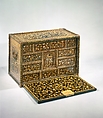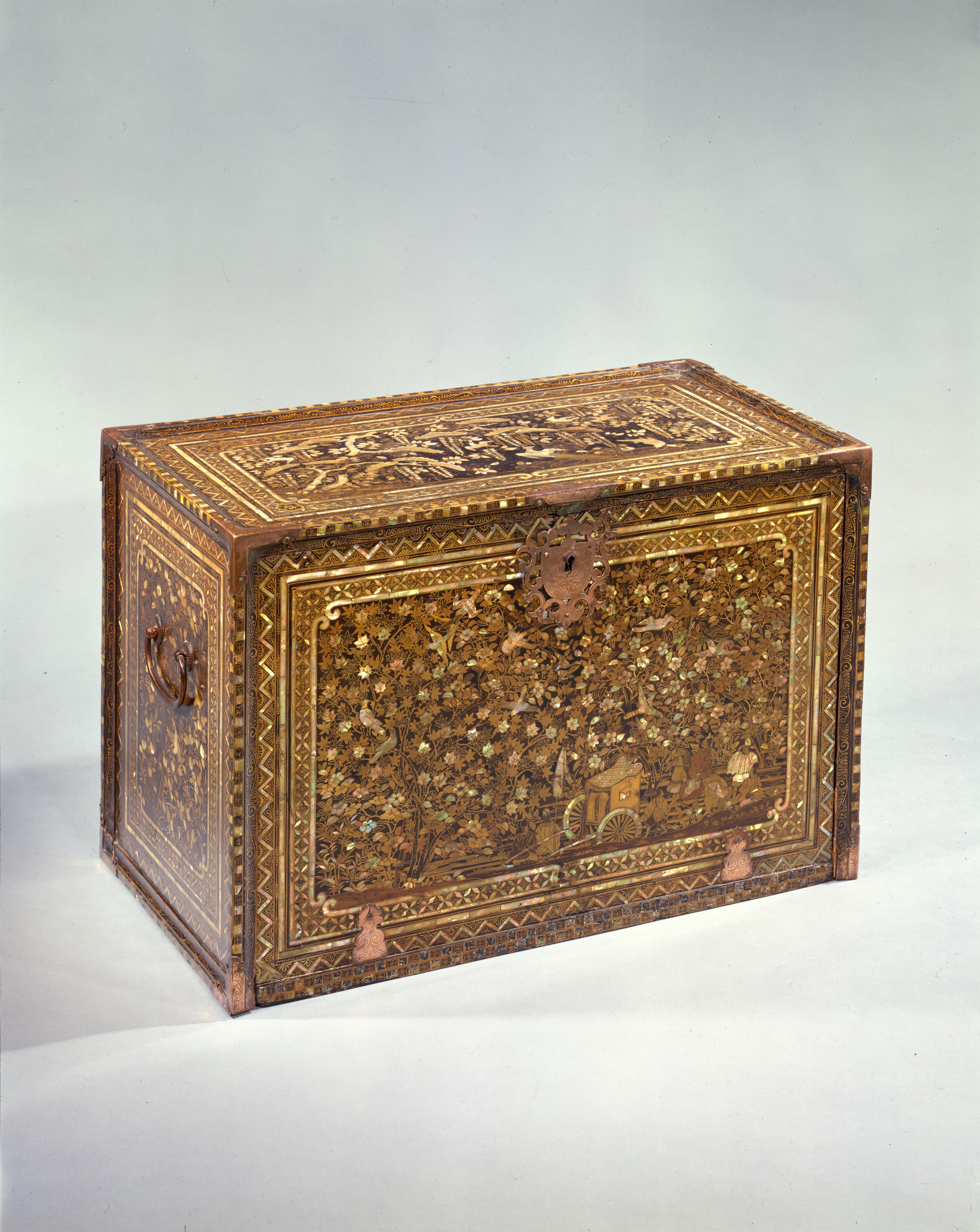Cabinet of Drawers with Birds, Flowers, and Court Carriage
Not on view
The Portuguese and Spanish who visited Japan during the Momoyama period were fascinated by the exotic appearance of gold‑decorated lacquer associated with the taste of warlord Toyotomi Hideyoshi (1537–1598). As a result, lacquer commissioned for the European market typically adopted this flamboyant style (Kōdaiji maki‑e). Among the earliest goods exported from Japan, such pieces are known collectively as nanban (Southern Barbarian), the Japanese appellation for foreigners. The form of this cabinet is based on the European vargueno or escritorios, a chest of drawers with a drop front that served as a surface for writing. Its decorative patterns depict Japanese subjects, including a court carriage and courtiers, maple, mandarin orange, and cherry trees, camellia flowers, wisteria branches, and birds. The decorative bands of the borders are embellished with geometric designs.
Due to rights restrictions, this image cannot be enlarged, viewed at full screen, or downloaded.
This artwork is meant to be viewed from right to left. Scroll left to view more.



